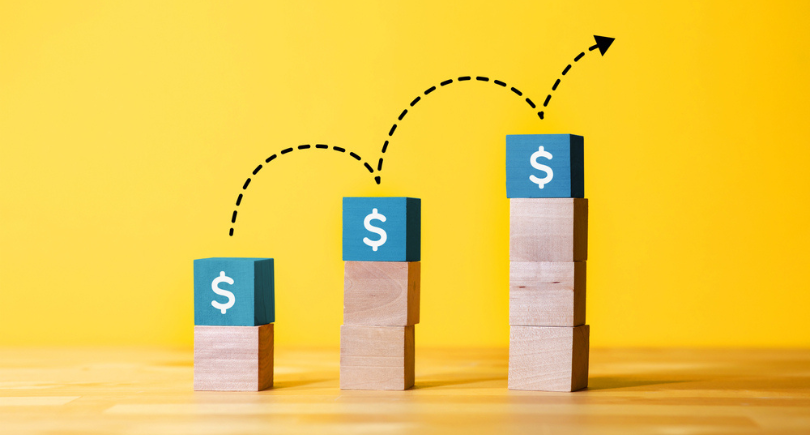
I recently noticed an interesting benefit marketed by Chase to new applicants for one of their popular cards:
“Raise your credit limit- Special Welcome Offer: Get an automatic, one-time review for a higher credit limit when you pay on time and spend $500 in your first six months.”
This offer intrigued me as I’d never really seen anything quite like it. I could certainly see the advantages and commend Chase for a unique perk, but I also noticed the offer was obviously intended to get new customers to engage with their card.
This brought to mind some deeper questions about credit limit increases in general, particularly automatic increases.
How to request a credit line increase
You can typically request a credit limit increase by one of the following methods:
- Online through the card issuer’s website or through their app
- Calling customer service and speaking to a representative
Ruth Susswein, director of consumer protection for Consumer Action, a consumer education and advocacy organization, explains in more detail how to initiate an increase.
“Assuming you’re a cardholder who pays on time and does not have a big load of card debt (and you’ve not received a credit line increase from this issuer anytime recently), you can certainly call customer service and request an increase. Or you could simply ask what would it take to get an increase.”
Rod Griffin, senior director of consumer education and advocacy at Experian, adds that you should be sure to be prepared when you call.
“Be prepared to explain why you’re asking for more credit, and to provide information on your income and other expenses like housing. Your request may be approved on the spot, though some requests take up to 30 days to be approved or processed.”
BONUS TIP!
One downside of initiating your own request is that you may or may not get approved. According to Griffin, each card issuer has its own guidelines for granting credit increases. Generally speaking, you should be a responsible cardholder for at least six months and should not have requested an increase already in the past six months.
What is an automatic credit limit increase?
Automatic credit limit increases, as you might guess, are initiated by your card issuer.
Most card companies will automatically evaluate cardholder accounts after a certain number of months or years to determine whether a higher credit limit is warranted. If so, you will be notified [in writing], and the increase will go into effect automatically.
Your issuer will consider similar factors as noted above before offering you an increase. Susswein explains:
“Even when you don’t actively request one, you may be offered an increase automatically if your card issuer reviews your credit and account history and decides to increase your line.”
➤ LEARN MORE:Why payment history is such an important part of your credit score
The good news is that since your issuer initiates the request, you have a better chance of getting approved (at least in theory).
One indicator that you are being considered for an increase is if your issuer asks you for updated income information. While some consumers might consider this request a bit unnerving, it can actually be a good thing, unless of course your income has dropped.
“If your card issuer requests updated income information, [don’t be alarmed] as it could be a sign that they’re considering a credit limit increase,” says Griffin.
Personal finance journalist Donna Freedman, author of the “Your Playbook for Tough Times” books, adds:
“No matter how your increase is requested [automatically or on your own], you must provide some financial info. The 2009 Credit Card Act requires card issuers to weigh your ability to pay before it will increase your limit. The answer might come almost immediately, although some card issuers will first do a ‘hard pull’ on your credit report.”
BONUS TIP!
With consumer card debt mounting and interest rates at or near historic highs, you might be wondering if it is harder to get a line increase in the current economic environment? The short answer is no.
According to Griffin, in any environment, a person’s ability to qualify for a credit line increase will depend on their unique financial history and the requirements of their lender.
Does a credit limit increase hurt your credit score?
Requesting a credit line increase on your own can result in a hard inquiry (also known as a “hard pull”), which can cause a small dip in your credit score.
“Although the effect is minor and temporary, it’s a good idea to limit the number of hard inquiries to your credit,” explains Griffin. “This is especially true if you’ll soon be making a major credit decision, such as applying for a mortgage.”
The good news is that an automatic line increase does not usually involve a hard inquiry. As a result, an auto increase should generally not adversely affect your score.
If a credit line increase is granted, it could also help your score by reducing your utilization rate, which calculates how much of your credit line that you utilize at any given time. There is a direct correlation between your card balance and your utilization rate. Simply put, the higher your card balance is, the higher your utilization rate is. Susswein further explains:
If you can afford the bigger line, a higher limit might actually improve your credit score! About a third of your score is based on how much of your line you use (called credit utilization). The goal is to only use about 30% [or less] of your line. The premise here is that a higher credit limit would mean you are using less of your available credit, making you more financially attractive.
Griffin adds that, “a higher limit can increase your spending power and also help you maintain a healthy credit utilization [ratio], which is a key credit score ingredient.”
Freedman gives a real-life example of how utilization can be affected by a limit increase:
“Suppose you currently have a $10,000 credit limit on your sole card. A run of bad luck (car troubles, medical co-pays, a major appliance breakdown) might have you putting $4,000 on the card temporarily.
“That’s more than 30% of your available credit [40% to be exact], which is the most you should ever use. Using more than that has a negative effect on your score. If you’d gotten an extra $3,000 on your credit line ahead of time, then you’d be using less than 30% of your limit [and your score would likely not be negatively impacted].”
BONUS TIP!
Susswein cautions that if your current balance is near your credit limit, you’re not as likely to get approved for a line increase since your utilization is probably already too high.
Not sure what your utilization rate is? You can use our utilization calculator to compute your rate even if you have multiple cards.
Final thoughts/cautions
Getting a credit line increase can be a real financial blessing in terms of increasing your spending power and, as an added bonus, can help your credit score. Moreover, an auto increase can be a pleasant surprise and help streamline the process.
However, you should bear in mind some general principles before you accept an auto increase (you can reject the auto increase by calling your card company) or before you initiate an increase. Griffin offers the following tips/cautions:
- A higher limit could make it tempting for you to run up a higher balance. While a higher credit limit doesn’t cause overspending, it can make it easier to do so.
- If you’re considering requesting an increase, it’s a good idea to ensure your credit health is in good standing, just as you would if you were applying for any other form of credit. Make your payments on time every time and aim to keep your utilization rates low.
- There are free tools available to help you improve your credit, including Experian Boost. This is a free feature from Experian (one of the three major credit reporting agencies) that allows you to get credit for making your cell phone, utility, video streaming service and other payments on time.
Susswein offers additional common-sense advice:
“A bigger line means you can spend more, but can you really afford to do so? Think about whether you can afford a higher limit — especially if you’re already carrying a balance. In short, ask yourself if you can afford to take on more debt and if you have the willpower to not use a big chunk of the higher line.”


